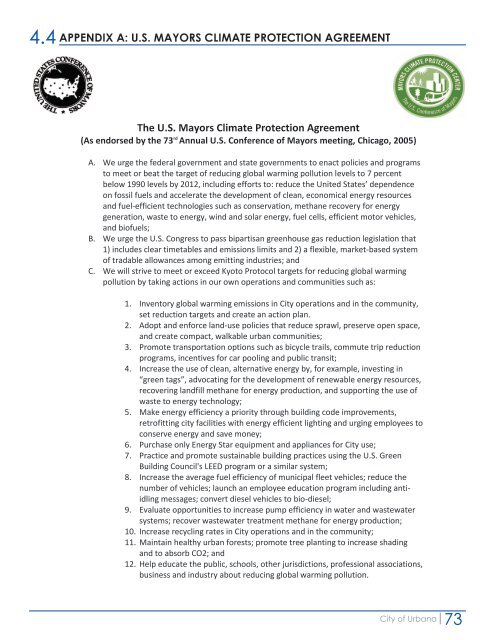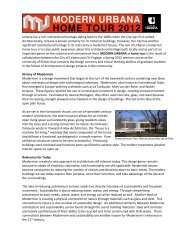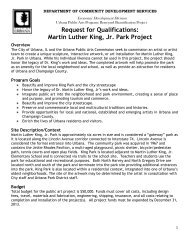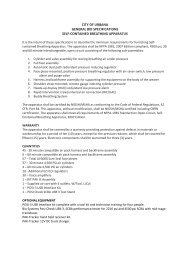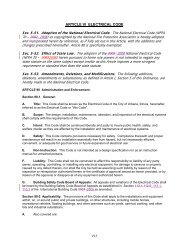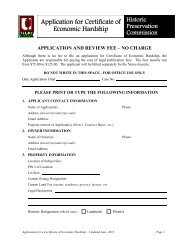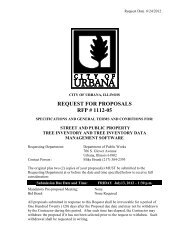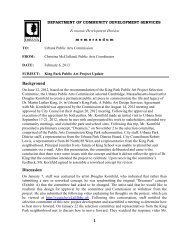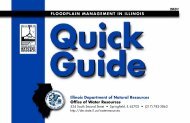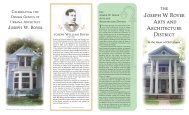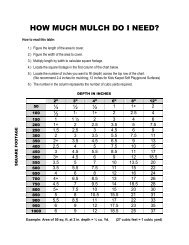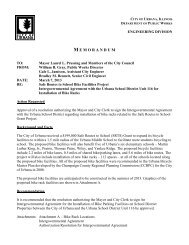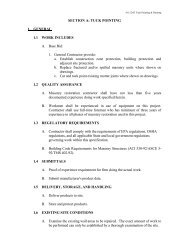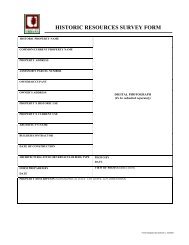CLIMATE ACTION PLAN - City of Urbana
CLIMATE ACTION PLAN - City of Urbana
CLIMATE ACTION PLAN - City of Urbana
- No tags were found...
You also want an ePaper? Increase the reach of your titles
YUMPU automatically turns print PDFs into web optimized ePapers that Google loves.
4.4<br />
APPENDIX A: U.S. MAYORS <strong>CLIMATE</strong> PROTECTION AGREEMENT<br />
The U.S. Mayors Climate Protection Agreement<br />
(As endorsed by the 73 rd Annual U.S. Conference <strong>of</strong> Mayors meeting, Chicago, 2005)<br />
A. We urge the federal government and state governments to enact policies and programs<br />
to meet or beat the target <strong>of</strong> reducing global warming pollution levels to 7 percent<br />
below 1990 levels by 2012, including efforts to: reduce the United States’ dependence<br />
on fossil fuels and accelerate the development <strong>of</strong> clean, economical energy resources<br />
and fuel-efficient technologies such as conservation, methane recovery for energy<br />
generation, waste to energy, wind and solar energy, fuel cells, efficient motor vehicles,<br />
and bi<strong>of</strong>uels;<br />
B. We urge the U.S. Congress to pass bipartisan greenhouse gas reduction legislation that<br />
1) includes clear timetables and emissions limits and 2) a flexible, market-based system<br />
<strong>of</strong> tradable allowances among emitting industries; and<br />
C. We will strive to meet or exceed Kyoto Protocol targets for reducing global warming<br />
pollution by taking actions in our own operations and communities such as:<br />
1. Inventory global warming emissions in <strong>City</strong> operations and in the community,<br />
set reduction targets and create an action plan.<br />
2. Adopt and enforce land-use policies that reduce sprawl, preserve open space,<br />
and create compact, walkable urban communities;<br />
3. Promote transportation options such as bicycle trails, commute trip reduction<br />
programs, incentives for car pooling and public transit;<br />
4. Increase the use <strong>of</strong> clean, alternative energy by, for example, investing in<br />
“green tags”, advocating for the development <strong>of</strong> renewable energy resources,<br />
recovering landfill methane for energy production, and supporting the use <strong>of</strong><br />
waste to energy technology;<br />
5. Make energy efficiency a priority through building code improvements,<br />
retr<strong>of</strong>itting city facilities with energy efficient lighting and urging employees to<br />
conserve energy and save money;<br />
6. Purchase only Energy Star equipment and appliances for <strong>City</strong> use;<br />
7. Practice and promote sustainable building practices using the U.S. Green<br />
Building Council's LEED program or a similar system;<br />
8. Increase the average fuel efficiency <strong>of</strong> municipal fleet vehicles; reduce the<br />
number <strong>of</strong> vehicles; launch an employee education program including antiidling<br />
messages; convert diesel vehicles to bio-diesel;<br />
9. Evaluate opportunities to increase pump efficiency in water and wastewater<br />
systems; recover wastewater treatment methane for energy production;<br />
10. Increase recycling rates in <strong>City</strong> operations and in the community;<br />
11. Maintain healthy urban forests; promote tree planting to increase shading<br />
and to absorb CO2; and<br />
12. Help educate the public, schools, other jurisdictions, pr<strong>of</strong>essional associations,<br />
business and industry about reducing global warming pollution.<br />
<strong>City</strong> <strong>of</strong> <strong>Urbana</strong><br />
73


